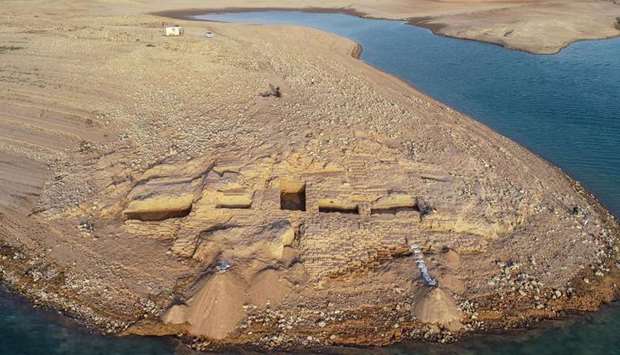German and Kurdish archaeologists have discovered a
3,400-year-old palace at a reservoir in northern Iraq thanks to a
long drought, a German university said on Thursday.
The at least 2,000-square-metre building was part of the Kingdom of
Mitanni, an ancient state that ruled most of Syria and Anatolia,
according to the University of Tuebingen.
After making the discovery last autumn, archaeologists had only three
weeks to examine the building before water levels at the reservoir
rose again.
"We dug as fast as we could," Ivana Puljiz, a senior archaeologist
from the University of Tuebingen, told dpa. As water levels rose, the
building vanished completely again.
The walls, made of clay bricks, are up to two metres tall and inside
archaeologists found mural paintings in glowing red and blue colours.
It was an "archaeological sensation," Puljiz said, explaining that
these kinds of paintings are rarely found.
Ten cuneiform scripts were also found inside the building. One of
them indicated that the palace was once part of the old city of
Zachiku, Puljiz said.
The site belongs to the Kurdish autonomous region in northern Iraq.
According to the university, Kurdish archaeologist Hassan Ahmed Kasim
considers the discovery to be one of the most important finds in the
region in recent decades.

An aerial view of the remnants of the palace. Picture courtesy: University of Tuebingen
